Cập nhật tin bão mới nhất: Vị trí và đường đi của bão số 7
Theo bản tin mới nhất của Trung tâm Dự báo Khí tượng Thủy văn Quốc gia cách đây ít phút, hồi 13 giờ (10/11), vị trí tâm bão ở vào khoảng 18,8 độ Vĩ Bắc; 113,0 độ Kinh Đông, trên vùng biển phía Tây khu vực Bắc Biển Đông, cách quần đảo Hoàng Sa khoảng 240km về phía Bắc Đông Bắc. Sức gió mạnh nhất vùng gần tâm bão mạnh cấp 12 (118-13km/h), giật cấp 14. Di chuyển theo hướng Tây Nam, tốc độ khoảng 5km/h.

Tin bão mới nhất: Chuyên gia khí tượng cảnh báo biển Đông xuất hiện bão đôi, các địa phương lên phương án ứng phó
Dự báo diễn biến bão số 7 Yinxing trong 24 đến 48 giờ tới
Về tác động của bão số 7: Vùng biển phía Tây khu vực Bắc Biển Đông (bao gồm vùng biển quần đảo Hoàng Sa) có gió mạnh cấp 7-9, vùng gần tâm bão đi qua cấp 10-12, giật cấp 14, sóng biển cao 4,0-6,0m, vùng gần tâm 6,0-8,0m; biển động dữ dội.
Từ gần sáng ngày 11/11, vùng biển ngoài khơi Quảng Trị đến Quảng Ngãi có gió mạnh dần lên cấp 6-7, giật cấp 9, sóng biển cao 2,0-4,0m; biển động mạnh.
Tàu thuyền hoạt động trong các vùng nguy hiểm nói trên đều có khả năng chịu tác động của dông, lốc, gió mạnh, sóng lớn.
Bão này chưa qua, bão khác lại tới trên biển Đông
Sáng 10/11, chia sẻ với PV Dân Việt, ông Nguyễn Văn Hưởng, Trưởng phòng Dự báo thời tiết, Trung tâm Dự báo Khí tượng Thủy văn Quốc gia vừa có những chia sẻ cập nhật diễn biến thiên tai trên Biển Đông trong những ngày tới. Sáng ngày 4/11 một áp thấp nhiệt đới ở khu vực phía Đông của Philippin mạnh lên thành bão có tên quốc tế là YINXING. Đây là cơn bão thứ 22 trên Tây Bắc Thái Bình Dương.

Ông Nguyễn Văn Hưởng, Trưởng phòng Dự báo thời tiết, Trung tâm Dự báo Khí tượng Thủy văn Quốc gia vừa có những chia sẻ cập nhật diễn biến thiên tai trên Biển Đông trong những ngày tới.
Chiều ngày 7/11, bão YINXING đổ bộ và khu vực phía Đông của Philippin; đến sáng sớm 08/11 bão YINXING di chuyển vào Biển Đông thành cơn bão số 7; đến chiều ngày 9/11 bão số 7 có cường độ mạnh nhất cấp 14-15; sau khi đạt cường độ mạnh nhất vào chiều qua, từ đêm ngày 9/11 bão số 7 ổn định và đến sáng sớm nay (10/11) đổi hướng di chuyển xuống phía Nam, cường độ giảm nhanh.
Điều kiện môi trường tác động đến hướng di chuyển và cường độ của bão số 7. Từ đêm qua tới giờ bão số 7 di chuyển vào khu vực có điều kiện môi trường không thuận lợi cho sự phát triển của bão; thứ nhất là nhiệt độ mặt nước biển hiện tại ở khu vực phía Tây của quần đảo Hoàng Sa dưới mức tối ưu, dưới 26 độ, làm giảm nguồn năng lượng cung cấp cho bão, góp phần làm suy yếu dần.
Thứ hai là khối không khí lạnh và khô vẫn bao trùm, vì thế độ ẩm tương đối trong lớp khí quyển từ mặt đất đến độ cao 1500m rất thấp, làm hạn chế sự phát triển của mây bão; ngoài ra hiện tại ở khu vực phía Đông của Philippin đang có một cơn bão mới, có tên quốc tế là TORAJI đang hoạt động, sáng mai khi di chuyển vào khu vực phía Đông của đảo Luzon (Philippin), khoảng cách giữa bão số 7 (YINXING) và bão TORAJI vào khoảng 1200-1400km, là khoảng cách mà tương tác bão đôi xuất hiện, bão TORAJI sẽ làm cho bão số 7 (YINXING) lệch nhiều hơn xuống phía Nam.
“Dự báo hiện tại lúc 11h ngày 10/11 thì trong vòng 24-48 giờ tới, bão dự kiến tiếp tục di chuyển theo hướng Tây Nam và cường độ bão sẽ suy giảm nhanh xuống dưới cấp 10 do các điều kiện không thuận lợi từ nhiệt độ và độ ẩm không khí”, ông Nguyễn Văn Hưởng nhận định.
Đối với cơn bão số 7, tác động nguy hiểm nhất là tình trạng gió mạnh trên biển, với vùng biển phía Tây khu vực Bắc Biển Đông gió mạnh cấp 7-9, vùng gần tâm bão đi qua cấp 10-13, giật cấp 16, sóng biển cao 4,0-6,0m, vùng gần tâm 6,0-8,0m; biển động dữ dội. Từ gần sáng ngày 11/11, vùng biển Quảng Trị đến Quảng Ngãi có gió mạnh cấp 6-7, vùng gần tâm bão đi qua mạnh cấp 8, giật cấp 10, sóng biển cao 2,0-4,0m, vùng gần tâm bão 3,0-5,0m; biển động mạnh.Tàu thuyền hoạt động trong các vùng nguy hiểm nói trên đều có khả năng chịu tác động của dông, lốc, gió mạnh, sóng lớn.
Biển Đông có thể đón bão số 8 ngay sau bão số 7, mưa lớn ở các tỉnh
Ông Nguyễn Văn Hưởng cho biết, do ảnh hưởng của hoàn lưu bão số 7 từ tối và đêm mai đến hết ngày 12/11 ở khu vực Trung và Nam Trung Bộ sẽ có mưa nhưng rất ít khả năng có mưa cực đoan gây lũ trên các trên các sông ở miền Trung.
Đây là những cảnh báo tác động theo dữ hiệu hiện tại, người dân các vùng ven biển miền Trung, đặc biệt là từ Quảng Trị đến Quảng Ngãi, cần theo dõi sát tình hình bão và chuẩn bị các phương án ứng phó để giảm thiểu rủi ro.
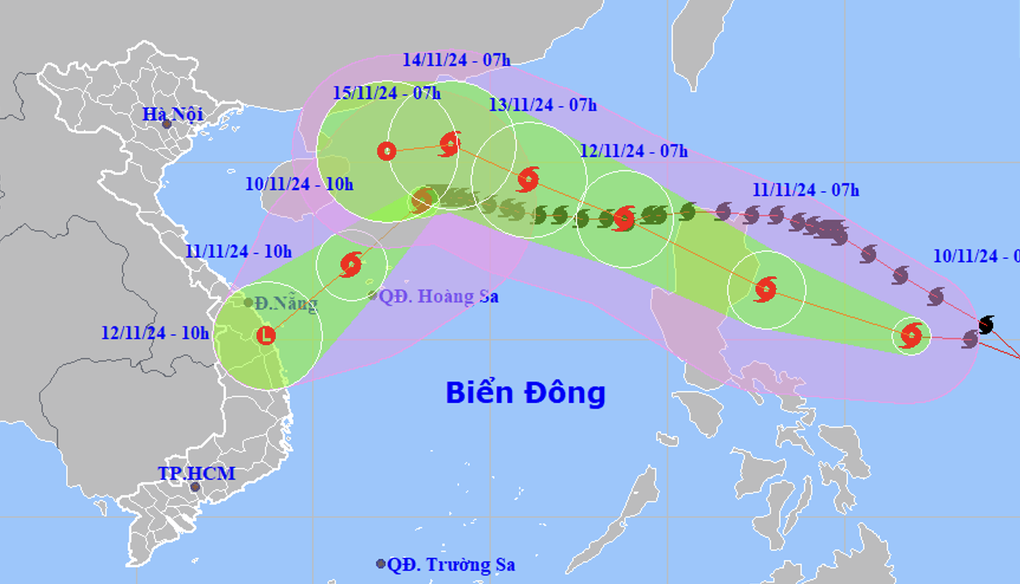
Hướng di chuyển của hai cơn bão (Ảnh: NCHMF).
Về diễn biến thời tiết Biển Đông trong tuần tới, ông Nguyễn Văn Hưởng cho biết, hiện tại ở khu vực phía Đông của Philippin đang có tới 2 cơn bão, 1 áp thấp nhiệt đới đang hoạt động, cơn bão TORAJI nhiều khả năng sẽ di chuyển vào Biển Đông trong khoảng chiều tối đến đêm ngày 11/11, vì thế sau bão số 7 sẽ lại xuất hiện cơn bão số 8; dưới tác động của bão số 7 rồi đến lượt bão số 8 thì trên khu vực phía Bắc và giữa của Biển Đông trong những ngày tới sẽ liên tục là những ngày thời tiết xấu, với gió mạnh, sóng cao và biển động mạnh.
Ứng phó với diễn biến thời tiết trên biển, Bộ trưởng Bộ Nông nghiệp và Phát triển nông thôn vừa có công điện gửi Ủy ban nhân dân các tỉnh, thành phố ven biển từ Quảng Ninh đến Bình Thuận chủ động ứng phó với diễn biến của bão.
Các địa phương theo dõi chặt chẽ diễn biến của bão; quản lý các phương tiện ra khơi; tổ chức kiểm đếm tàu, thuyền; thông báo cho chủ các phương tiện, thuyền trưởng các tàu, thuyền đang hoạt động trên biển biết vị trí, hướng di chuyển và diễn biến của bão để chủ động phòng tránh, thoát ra hoặc không di chuyển vào khu vực nguy hiểm. Vùng nguy hiểm trong 24 giờ tới: Từ Vĩ tuyến 16,5-21,0 độ Vĩ Bắc, phía Đông Kinh tuyến 119,0 độ Kinh Đông; trong 48 giờ tới: Từ Vĩ tuyến 15,0-21,0 độ Vĩ Bắc, phía Đông Kinh tuyến 117,5 độ Kinh Đông (vùng nguy hiểm được điều chỉnh theo các bản tin dự báo). Sẵn sàng lực lượng, phương tiện để cứu hộ, cứu nạn khi có yêu cầu.
Đài Truyền hình Việt Nam, Đài Tiếng nói Việt Nam, Thông tấn xã Việt Nam, hệ thống Đài thông tin duyên hải và các cơ quan thông tin đại chúng từ Trung ương đến địa phương tăng cường các biện pháp thông tin về diễn biến của bão đến các cấp chính quyền, người dân biết để chủ động phòng tránh, ứng phó kịp thời, hiệu quả. Các Bộ, ngành theo chức năng, nhiệm vụ quản lý nhà nước và nhiệm vụ được phân công chủ động chỉ đạo, phối hợp với các địa phương ứng phó diễn biến của bão.



























![[Tin tức Hàng hải] Bộ Tài chính nhắm mục tiêu vào các mạng lưới đa dạng tạo điều kiện thuận lợi cho thương mại dầu mỏ của Iran](https://vphoto.vietnam.vn/thumb/402x226/vietnam/resource/IMAGE/2025/7/14/43150a0498234eeb8b127905d27f00b6)



































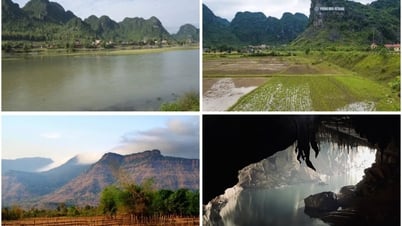




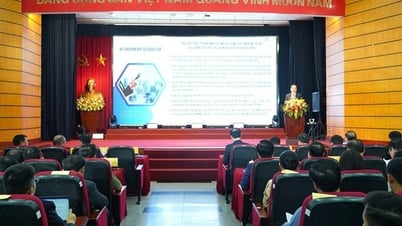












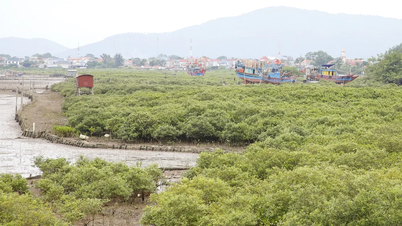



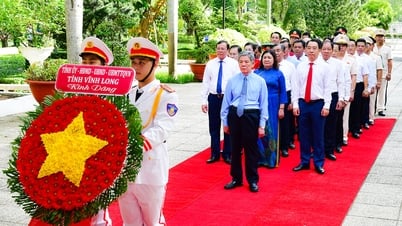

















Bình luận (0)